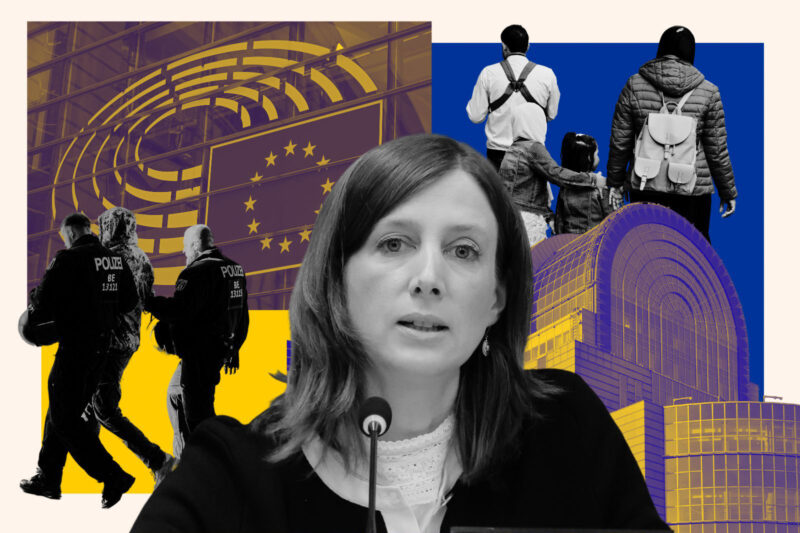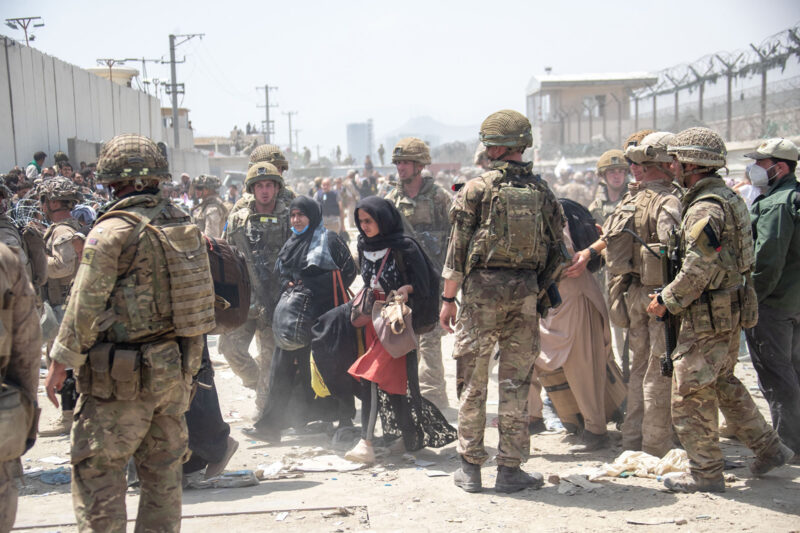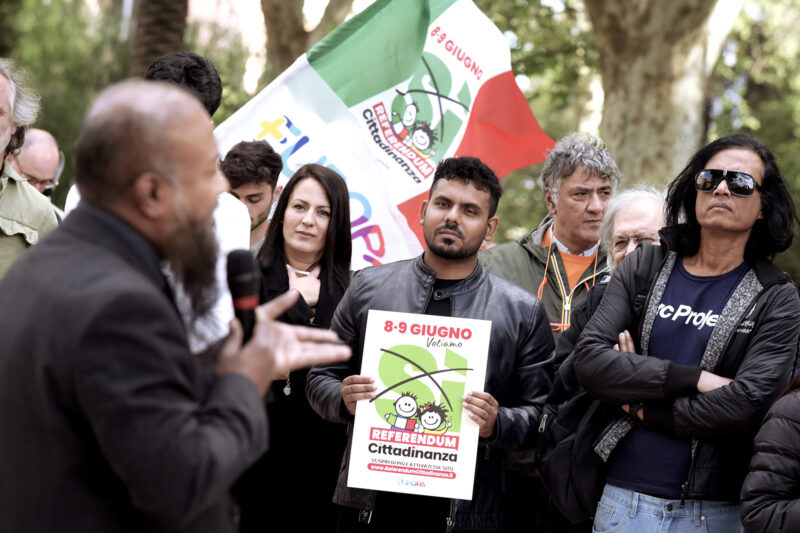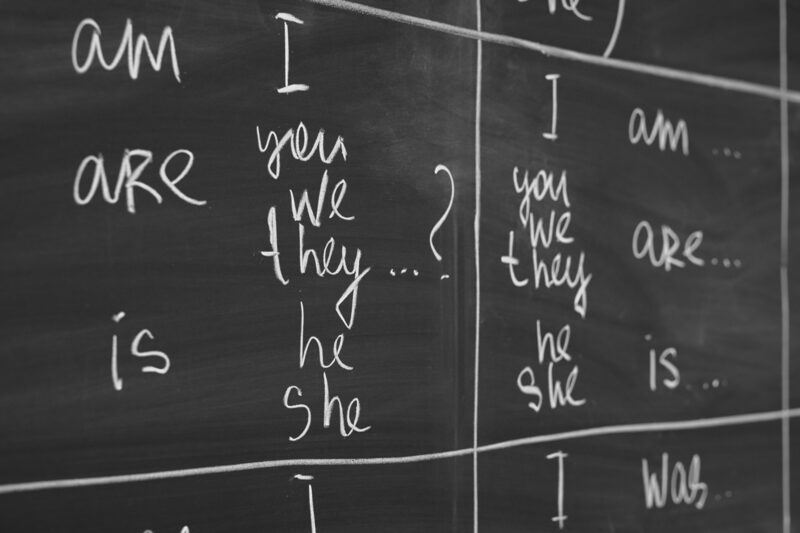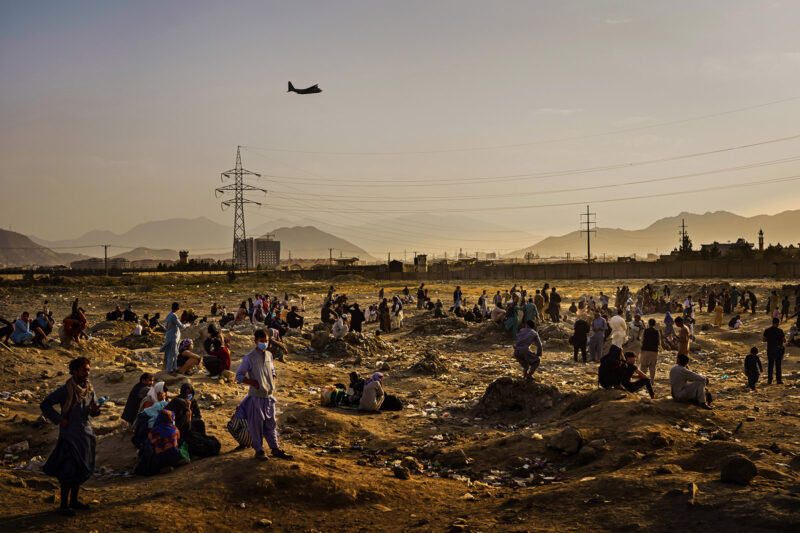Grinding bureaucracy, scant resources and far-right rhetoric fuel an asylum crisis in Belgium
As refugees sleep on the streets, the Flemish-nationalist party Vlaams Belang is using social media to push its views into the mainstream

The morning of 25 July was an important one for 31-year-old Ahmed, displaced from Gaza and seeking refuge in Belgium. Rushing to join a queue outside Petit-Chateau in Brussels — one of Belgium’s main asylum reception centres, which are responsible for processing new claims and offering temporary lodging — he explained that the country’s immigration system had left him homeless. “It’s overcrowded and can’t accommodate all of us,” he said.
Ahmed was hoping to be allocated a place at the centre, but the line later swelled to hundreds of people, meaning that he didn’t make it past the front door. A combination of pandemic backlogs in claims processing, obstructive bureaucracy and a lack of functioning centres has led to a chronic shortage of spaces for people who fulfil all the necessary criteria to be granted asylum. While families and children were allowed to enter the building, 160 single men were told they had to stay outside.
Belgium’s asylum reception system is facing a crisis that requires urgent state intervention. According to migration analysts, however, the broad-based coalition government of Prime Minister Alexander de Croo’s plans to tackle this long-brewing situation have been detrimentally influenced by the rising anti-immigration rhetoric of far-right politicians. One of the loudest voices is that of the Flemish-nationalist Vlaams Belang party leader Tom van Grieken, who frequently uses social media to call for an end to what he terms an “asylum invasion”.
In August, Secretary of State for Asylum and Migration Nicole de Moor announced new measures to increase the capacity of the asylum system by finding additional housing for new arrivals to the country. A further winter plan is expected to create new emergency shelters. Her ministry, however, has also proposed regulations that would limit the number of people eligible to remain in Belgium and send some applicants back to the first nation in which they claimed asylum.
“Through such solutions, the government wants to appease the right with forced returns. I do think that the right-wing parties have an influence on this dynamic,” said Thomas Willekens, policy officer at Vluchtelingenwerk Vlaanderen, an NGO for refugees in Flanders, a Dutch-speaking region of northern Belgium with a population of 6.7 million.
Vlaams Belang has been a presence on Belgium’s political scene for 18 years, but its roots go much deeper. The party was founded in 2004, immediately after its predecessor, the Vlaams Blok, which had operated since 1979, was dissolved when Belgian courts ruled that it had violated multiple anti-racism laws. While ostensibly different organisations, both parties share the same anti-immigration positions and aims to build an independent Flemish state.
In the 1980s, mainstream political parties agreed to place what was referred to as a “cordon sanitaire” around the Vlaams Blok, banning any cooperation with the party, ruling out the possibility of coalition agreements and effectively excluding it from significant power. Similar conditions apply to the Vlaams Belang, including a widely upheld media blockade. In 2019, however, the Vlaams Belang won 15 seats in the Belgian federal parliament, up from only three previously, making it one of the most popular far-right parties in Europe.
In recent years, in order to overcome the refusal of established news organisations to engage with it, the Vlaams Belang has relied on social media to spread its message.
“Uninhibited mass migration makes it increasingly easy to keep our society at a distance and to assimilate as little as possible. High time to stop this danger…” read one typical Facebook post by the party in July.
“Save on asylum and immigration, not OUR people!” said another, calling on the government to allocate more funds to help Belgians and less to immigrants.
According to Dr Judith Sijstermans, a political lecturer at the University of Aberdeen, the party’s use of social media platforms has kept it in the public eye and allowed its ideas to ripple through Belgian society.
“For the Vlaams Belang, a key purpose of using social media is to communicate with a wider audience of supporters, who are not formal members but see themselves as friends of the party,” she said. “They use social media to collect these supporters’ contact details and develop direct connections with them, which is particularly important, given their relatively small number of party members when compared to the number of voters.”
Research conducted by AdLens — a team of activists, journalists and researchers who investigate how much political parties spend to promote themselves — found that of all far-right parties in Europe, Vlaams Belang was the most popular online, with a current total of more than 600,000 Facebook and Instagram followers. In the first six months of 2022, Van Grieken spent £190,000 on Facebook and Instagram advertising, with the aim of reaching Belgians old and young.
“They use almost all social media channels to increase the accessibility of their messages and have also introduced their own Vlaams Belang app, which people can download to follow updates from the party,” said Carl Devos, a Belgian political analyst and professor of political science at Ghent University. “They also have their own cafe in Antwerp, where they meet and invite people of all ages.”
Devos highlighted that the party has, so far, not faced any significant problems over its posts on Facebook and Twitter. “They’re very intelligent and communicate their messages in a way that these social media channels haven’t tried to block them,” he said.
In 2021, asylum applications to Belgium increased by more than 68% from 2020
In one Facebook post from September, the party urged asylum and migration minister De Moor to ensure that the country maintains strict immigration regulations and “shields” its social welfare system from immigrants. The post received more than 1,900 likes.
One young woman responded: “This is starting to look more like an invasion. It is certainly not enriching for Belgium.”
Similar complaints have been made by Belgians living near the Petit-Chateau asylum reception centre, who are unhappy about the lines of people waiting outside every day and the number sleeping on the streets nearby.
In an interview with the Belgian broadcaster VRT in August, De Moor attempted to assuage the concerns of complainants by announcing that the registration of asylum applications will be moved to the Immigration Office in north Brussels, in order to reduce the pressure on the reception centre.
Yet, these short-term solutions have done little to tackle the crisis faced by both clients and staff at the country’s asylum reception centres.
In 2021, asylum applications to Belgium increased by more than 68% from 2020, according to the Federal Agency for the Reception of Asylum Seekers (Fedasil). In September alone, relevant authorities registered more than 4,000 claims. That number only looks set to rise, placing Fedasil’s 80 functioning centres under increasing pressure.
In practical terms, this situation has led to serious overcrowding in Fedasil’s reception centres which, together with the agency’s partners, have a maximum capacity of 31,600 places, including 3,139 allocated for minors. As of 1 October, all adult places had been filled.
In mid-October, several Fedasil workers took to the streets of Brussels to protest against the Belgian government’s handling of the asylum system crisis. According to Willekens, it was the third time in less than a year that staff had taken such action.
A couple of weeks later, 21 young people — the majority from Afghanistan — ended up spending the night on the streets after being turned away from the reception centre. A week later, a family with a six-month old baby ended up in the same predicament.
Fedasil said these incidents occurred because of the demands being placed on the reception network and added that “the most vulnerable people” would be prioritised for accommodation. After a parliamentary debate in early October, De Moor announced that 150 personnel from other government departments such as the Ministry of Defence would play a role in helping Fedasil to process asylum applications faster.
The government in which De Moor serves has also drawn criticism from Amnesty International. In its March 2022 report, the human rights organisation expressed concern about the problems within Belgium’s asylum reception system and called on the state to find effective solutions.
The document also highlighted the way the country’s welcoming of refugees from Ukraine differed from its treatment of people fleeing conflicts elsewhere in the world. “The heartwarming solidarity with Ukrainian refugees threatens to hide the fact that Belgium started this crisis with a government-created backlog and shortage of reception facilities,” it highlighted.
At the beginning of the war in Ukraine, Belgium braced itself to accommodate more than 200,000 refugees. The country has taken in at least 50,000 refugees so far and groups on social media platforms have offered to house people with nowhere to go. Even the Vlaams Belang adopted a milder tone towards displaced Ukrainians. Van Grieken called on the government to temporarily suspend asylum applications from non-Ukrainian refugees, in order to make room for more people from the country.
“Ukrainian refugees must be given a bed, bath and bread in dignified comfort, and this with a separate status if necessary. But suddenly giving everyone full access to our already hotly pressured social security… is not an affordable option,” he wrote on the party’s website in March.
While these conversations play out, people from other nations, many of whom are also fleeing war and poverty, are left stranded, waiting for their asylum applications to be processed. Ahmed, for example, spent two weeks sleeping on the streets before being allocated a space in a facility more than 60 miles away.
“I now live in a shelter near Brugge, about an hour from Brussels,” he said. “I am still waiting for my asylum application to be processed, but I have not lost hope.”
 Newsletter
Newsletter




